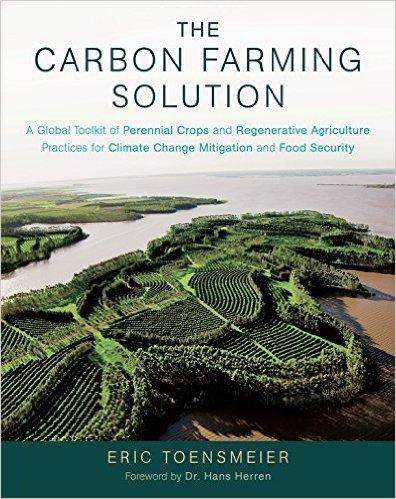
 2
2




















Seeking a long-term partner to establish forest garden. Keen to find that person and happy to just make some friends. http://www.permies.com/t/50938/singles/Male-Edinburgh-Scotland-seeks-soulmate















R Ranson wrote:
Joel Salatin is an interesting point. This is going to plummet everyone's opinion of me, but I'm not a fan.
R Ranson wrote:Before the author event, I despised the idea of carbon farming. All I saw was a capitalist excuse to continue polluting the planet. It's okay about this textile mill producing huge amounts of toxic sludge and terrible treatment of
slavesweatshop labourers because we planted some trees. This is what I thought carbon farming was. I'm really glad there is more to it than that.
From a practical point of view - ie a small farm which never hopes to make money from selling carbon, I don't see how carbon calculations help me.
R Ranson wrote:Have you ever tried to knit a sweater? Probably not.
R Ranson wrote:But the idea is the same to me. One stitch is tiny! It's just one little stitch. A sweater takes thousands of them, sometimes millions! But we make one stitch, then we make another, and keep going, and we have a sweater. Some of the earliest crowdfunding was based on this concept. I feel a lot of environmental change can be done like this, one tiny act (refuse a plastic bag), then another tiny act (pack your own lunch), then another (patch your jeans instead of buying new), and ad infinitum.... HOWEVER! The danger is stopping with just a few
stitchestiny environmental acts. Feeling self-satisfied because we recycled a few tin cans, is not in my opinion, an excuse to stop improving our ecological footprint. Five stitches do not a sweater make. And when the first sweater is finished, there's always more that need knitting. Anyway, that's my thoughts. It's also why I look for small practical actions that I can incorporate into my life. I support the large actions, but don't sit back and wait for them to happen.
R Ranson wrote:How much good can carbon farming actually do? .
Seeking a long-term partner to establish forest garden. Keen to find that person and happy to just make some friends. http://www.permies.com/t/50938/singles/Male-Edinburgh-Scotland-seeks-soulmate
 1
1




Neil Layton wrote:
To me, the answer is not to put it back in the ground, but to keep it in the ground. Carbon farming is not a solution.
.
Idle dreamer




France Zone 7a 1025mm rain, 1900 sunshine hours.
 1
1




Rus Williams wrote:Just a quick clarity question. Will the reading, or the discussion start on may 16th?
How permies.com works
What is a Mother Tree ?















R Ranson wrote:.
The introduction discussion is open.
Seeking a long-term partner to establish forest garden. Keen to find that person and happy to just make some friends. http://www.permies.com/t/50938/singles/Male-Edinburgh-Scotland-seeks-soulmate




Neil Layton wrote:
R Ranson wrote:.
The introduction discussion is open.
I thought that was here, hence my comments above.
Sooooorrrreeee!!







 1
1




May all beings be happy!
 2
2




Author 'Perennial Vegetables', co-author 'Edible Forest Gardens'.
Website - http://www.perennialsolutions.org/




Neil Layton wrote: so 13 tonnes of carbon per year for the next 34 years, which comes to 442 tonnes of carbon
Seeking a long-term partner to establish forest garden. Keen to find that person and happy to just make some friends. http://www.permies.com/t/50938/singles/Male-Edinburgh-Scotland-seeks-soulmate
 1
1




Eric Toensmeier wrote:Hello everyone, great discussion so far. I'm hard at work doing further carbon farming research, but very happy to answer questions once people have read through a section. I can be reached at toensmeier [AT] gmail, and I'll come chime in. Just let me know what you need me to weigh in on. Thus far I can say that most of the questions and concerns that people have put forward are answered in the pages to come - including those related to Savory's claims, methane and livestock (juicy controversy!), the unsustainability of offsets, and the avoidance of silver bullet thinking. And I agree - "solution" is not a perfect title but it was the best out of about 50 titles we thought about. Eric







 1
1











 3
3




How permies.com works
What is a Mother Tree ?




R Ranson wrote:Ah, I see the mighty
handbranch of Mother Tree has done a clean up. Thank you mother tree.

R Ranson wrote:And along those lines, are we thinking of putting chapter 1 in the Cider Press, it's basically the discussion on what climate change is and why it's important.
Seeking a long-term partner to establish forest garden. Keen to find that person and happy to just make some friends. http://www.permies.com/t/50938/singles/Male-Edinburgh-Scotland-seeks-soulmate
 1
1




How permies.com works
What is a Mother Tree ?

|
You get good luck from rubbing the belly of a tiny ad:
The new purple deck of permaculture playing cards
https://www.kickstarter.com/projects/paulwheaton/garden-cards
|





